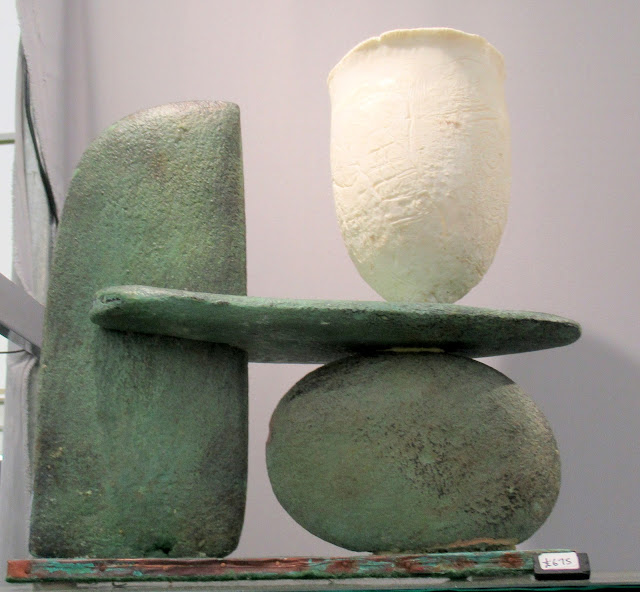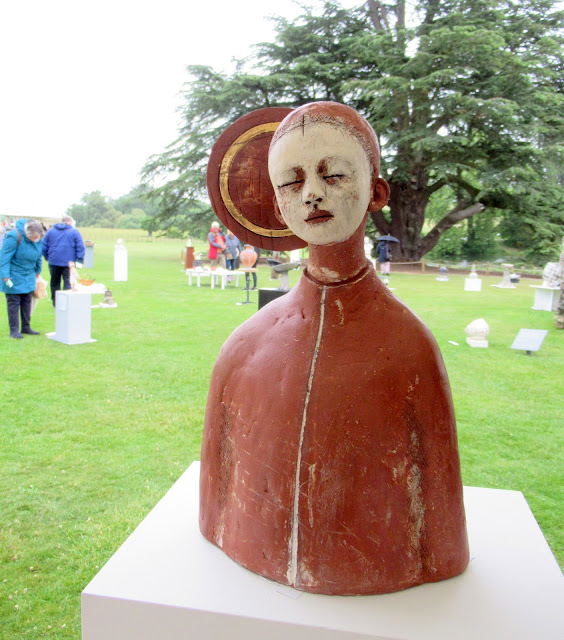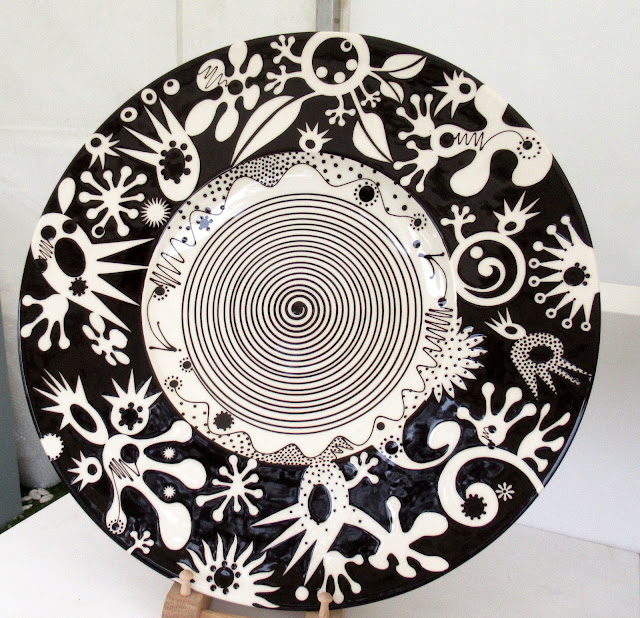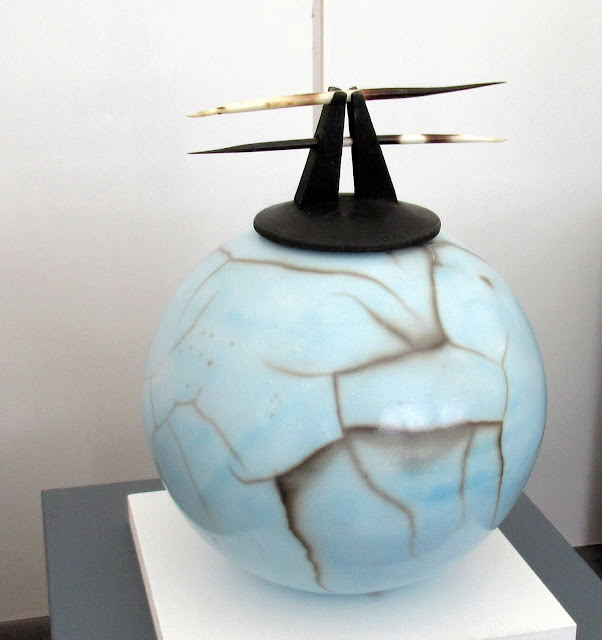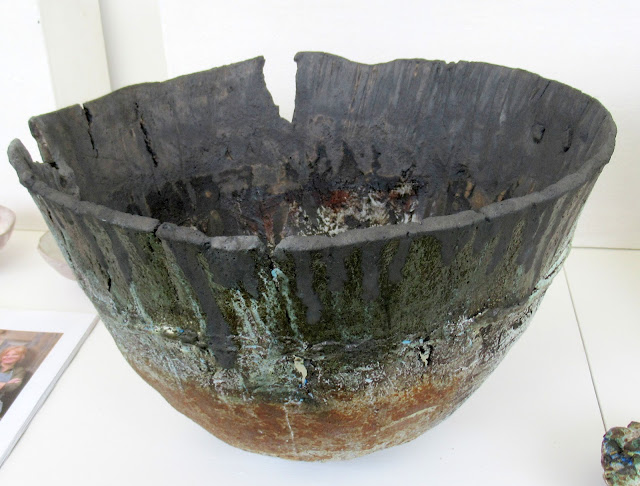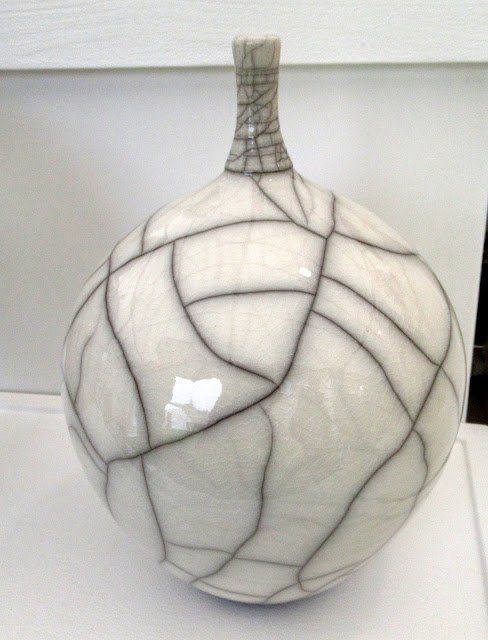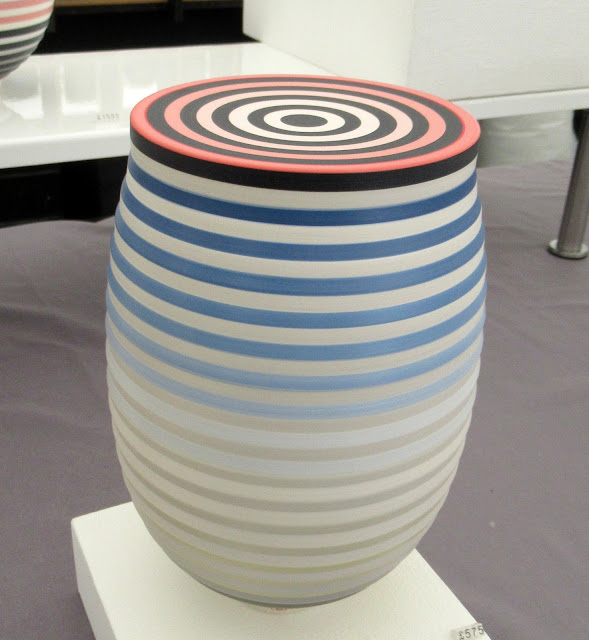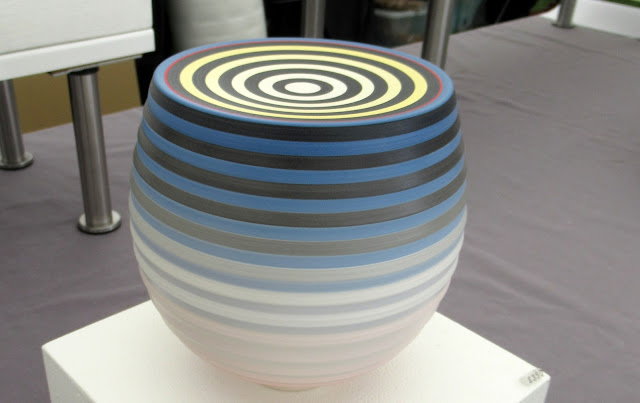We visited Potfest twice this year. Now that we are members of Compton Verney entry was free, with no need to book an allotted slot time. We had planned to go on the Saturday, and we did go indeed, but it was raining, so it was a bit miserable - the tents did provide protection, but one has to handle ceramics, and with holding an umbrella it's a bit difficult. Anyway, we really enjoyed it, as the exhibits were terrific, but, on Sunday, after our two visits to Warwickshire Open Studios we had time, and the weather on Sunday was glorious, so we gave it another go. The second visit was very relaxed and it gave us a chance to look at favourites again, and to chat to some of the artists.
This is an example of his latest work, and he was extremely pleased that I recognised this and pointed it out. Here, you can see evidence of his interest in archaeology.
Christy Keeney:
Christy Keeney is one of my favourite ceramicists and I have published quite a few posts about him, too many for me to list, but if you use the search facility on the right of this page, you will be able to see more of his work, especially given that the work he brought to Potfest is not as varied as his oeuvre generally is. I presume he brought pieces that sell at fairs, pieces that are easy to carry home.
I was very pleased that he was exhibiting at Potfest as I had never met him. I had quite a long chat with him and expressed my disappointment that he had not brought any of his abstract pieces to Compton Verney. He said that the initial response to his abstract work was not very encouraging, so he stopped making them. I tried to convince him that he should persevere, and I was very pleased when in an email he sent me later that week he said that my comments had encouraged him and he was going to start making some more abstract work. I look forward to seeing it, as I thought it was very interesting.
Sharon Griffin:
Griffin is a figurative artist who specialises in ceramic sculpture and fine art painting, directly inspired by the woodland where she often explores places in which to 'breathe'. 'I wish to evoke 'feeling' and mirror 'gesture' through the use of fast marks, quick making techniques and 'sketches'. My work sometimes has an unfinished quality which adds to the idea that the figure is a suggestion of a living being rather than a still ornamental object. It is important to me that my figures have an identity and are able to connect with an audience in a non-physical sense'.
Peter Hayes:
Again, I have posted a lot of Peter Hayes work, so if you want to use the search facility, you will be able to see more.
I had a chat with Peter Hayes as well. I knew that he submerges some of his sculptures in the river or the sea, and leaves them in the water for a long time, sometimes up to 10 years. He confirmed this, and talked about how he started doing this for fun, partly due to his interest in archaeology, and that as he was pleased with the results, how the patina of the pieces changed, he made it part of his practice. He talked about this for a long time, with real enthusiasm and pleasure.
Coaten hand builds in stoneware, coiling and sculpting, and uses a limited palette of matt white crackle glaze, gold lustre and occasionally ceramic decals reproduced from her drawings. Each piece has several layers of slip and glaze with areas left bare, creating pits and surface texture. Indian ink is then used to define the crackle. Her recent work includes the use of glass eyes, blown or hand painted, often intended for taxidermy.
Jemma Gowland:
In her work with white grogged stoneware and Athena porcelain pape rclay, Gowland explores the way that girls are constrained from birth to conform to an appearance and code of behaviour to present a perfect face and maintain the expectations of others. The disrupted surfaces describe the vulnerability beneath.
Sally MacDonell:
Artist's statement: 'I model each piece spontaneously pinching and squeezing slabs to form the female body. Leaving the joints revealed as evidence of the process and to hold elements of colour in the glazing. My building technique involves pushing out from the inside to give the figure a twist of the waist or a tilt of the shoulder; expressing a familiar transient moment. My aim is to connect with the viewer - to prompt a feeling of common humanity.
Having smoke fired for 12 years, I now work with colour. I love colour. I have developed a finish using underglaze colours mixed with engobe and fired at 1196oC. I'm drawn to the colours found in ancient Greek terracottas from the 2nd century BC and Medieval Netherlandic wood carvings. Surfaces that show experience, having been eroded and fragmented. When I apply the glaze it's very much like painting. It's a very spontaneous process which fits with the way I hand build'.






















